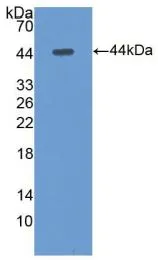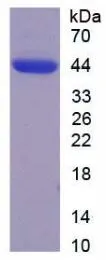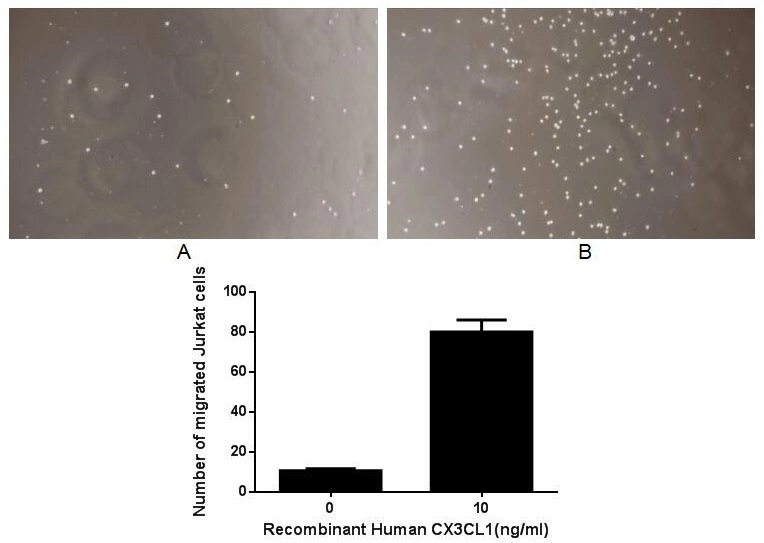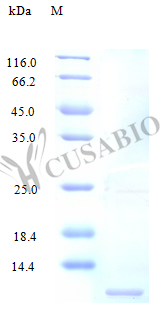
WB analysis of GTX00214-pro Human CX3CL1 protein (active).
Human CX3CL1 protein, His tag (active)
GTX00214-PRO
ApplicationsFunctional Assay
Product group Proteins / Signaling Molecules
Protein IDP78423
Overview
- SupplierGeneTex
- Product NameHuman CX3CL1 protein, His tag (active)
- Delivery Days Customer9
- Application Supplier NoteChemokine C-X3-C-Motif Ligand 1 (CX3CL1) also known as fractalkine is a large cytokine protein of 373 amino acids, it contains multiple domains and is the only known member of the CX3C chemokine family. Soluble CX3CL1 potently chemoattracts T cells and monocytes, while the cell-bound chemokine promotes strong adhesion of leukocytes to activated endothelial cells, where it is primarily expressed. Thus, chemotaxis assay used 24-well microchemotaxis system was undertaken to detect the chemotactic effect of CX3CL1 on the human monocytic cell line THP-1. Briefly, THP-1 cells were seeded into the upper chambers (150 microl cell suspension, 1x106 cells/ml in RPMI-1640 with FBS free) and SLC (1 ng/ml, 10 ng/ml, 100 ng/ml and 1000 ng/ml diluted separately in serum free RPMI-1640 ) was added in lower chamber with a polycarbonate filter (8um pore size) used to separate the two compartments. After incubation at 37C with 5% CO2 for 1h, the filter was removed, then cells in low chamber were observed by inverted microscope at low magnification (x100) and the number of migrated cells were counted at high magnification (x400) randomly. And CX3CL1 is able to induce migration of THP-1 cells.
- ApplicationsFunctional Assay
- CertificationResearch Use Only
- ConjugateUnconjugated
- Protein IDP78423
- Protein NameFractalkine
- Scientific DescriptionThis gene belongs to the CX3C subgroup of chemokines, characterized by the number of amino acids located between the conserved cysteine residues. This is the only member of the CX3C subgroup, which contains three amino acids between cysteine residues, resulting in a Cys-X-X-X-Cys configuration. The encoded protein contains an extended mucin-like stalk with a chemokine domain on top, and exists in both a membrane-anchored form where it acts as a binding molecule, or, in soluble form, as a chemotactic cytokine. The mature form of this protein can be cleaved at the cell surface, yielding different soluble forms that can interact with the G-protein coupled receptor, C-X3-C motif chemokine receptor 1 gene product. This gene plays a role in a wide range of diseases, including cancer, vasculitis, neuropathies, atherosclerosis, inflammatory diseases, and in human immunodeficiency virus infections. [provided by RefSeq, Sep 2017]
- Storage Instruction-20°C or -80°C,2°C to 8°C
- UNSPSC12352202




